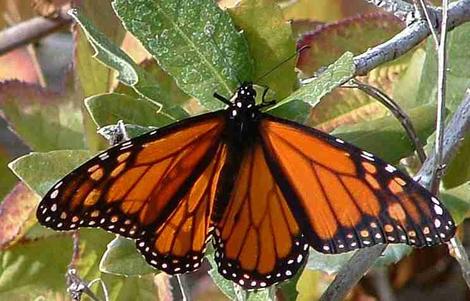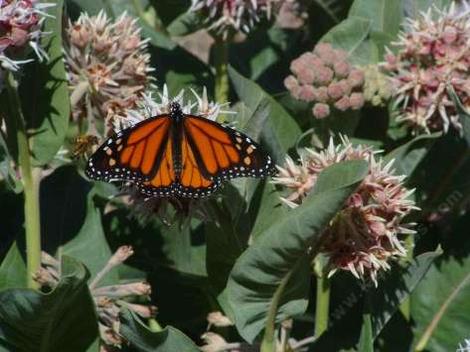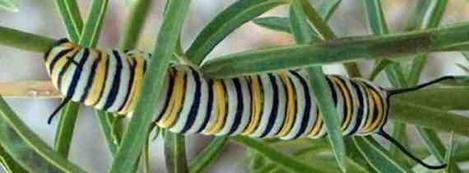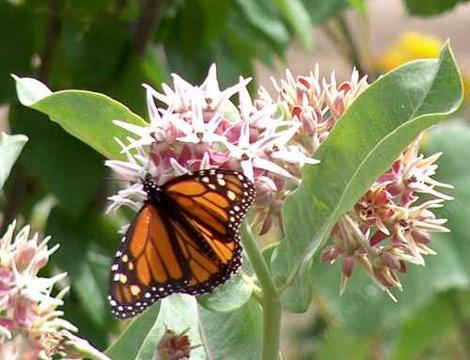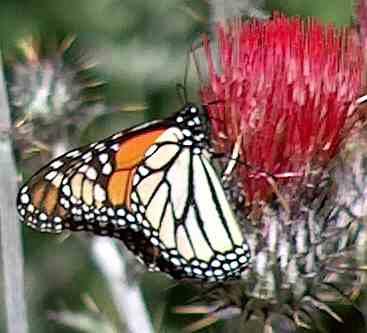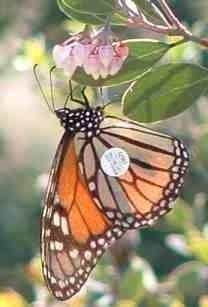Monarch Butterfly, Danaus plexippus
Diet of the Monarch Butterfly Larva
The Monarch butterfly larva feeds on milkweeds. Some of their favorites are the Monarch Milkweed, Asclepias eriocarpa and the Narrow leaf milkweed, Asclepias fascicularis. Milkweeds contain toxins that make the adult poisonous to birds and other predators. Most insects can eat the monarch without effect. They are preyed upon by Stink bugs and Assassin bugs.
There are many kinds of milkweeds. We usually have three species in stock. They are easy to grow and look nice in a garden. Some of the reasons Monarch's are having problems is the removal of native Milkweed species and the introduction of other milkweed species into gardens.
The Monarch and Migration
The Monarch butterfly is an amazing insect because it migrates. This is an incredible feat as it is sensitive to temperatures, easily blown around by the wind, and has to travel nearly two thousand miles to a place it has never been. It also has a very rudimentary nervous system compared to the vertebrates, like birds, that migrate. When temperatures begin to drop in the US and Canada, these insects begin to head south to their overwintering areas in Mexico and California. When temperatures begin to rise again, the insects move north. Many butterflies are tagged (photo above) by researchers who are trying to learn more about their migration.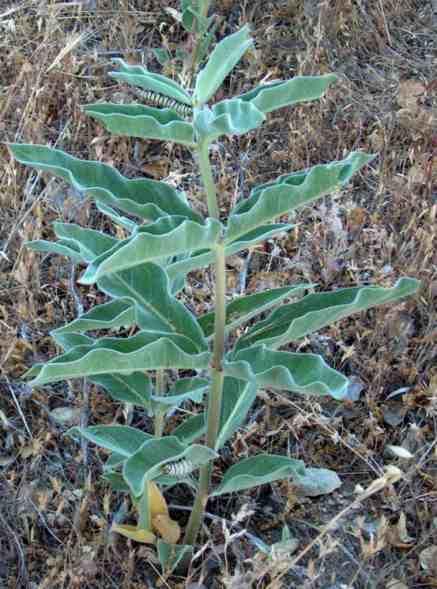
The Diet of the Adult Monarch Butterfly
The Monarch butterfly feeds on nectar form various flowers including milkweeds, Asclepias sp. In the picture below a monarch butterfly feeds on an Asclepias speciosa. This is a large milkweed that does very good in gardens. It has large showy flowers and large leaves.
They also like Butterfly mint, Monardella spp, below a monarch butterfly is sipping off an annual species. However, there are many perennial species that are very good in gardens. One of the most attractive ones is Monardella antonina, Butterfly Mint Bush, this species is very popular with butterflies.
Some other flowers that are used by the Monarch butterfly are; Salvia mellifera (Black Sage), Trichostema lanatum (Woolly Blue Curls), Agastache urticifolia (California Licorice Mint), Chilopsis linearis (Desert Willow), Helianthus gracilentus (Dwarf Sunflower), Encelia californica, Mahonia nevinii (a species related closely to Oregon Grape), Ribes aureum var. gracillimum (Golden Currant), Dichelostemma capitatum (Wild Hyacinth), Isomeris arborea (Bladder Pod), Lobelia dunnii (Blue Lobelia)and Cirsium occidentale var. venustum (Venus Thistle)
